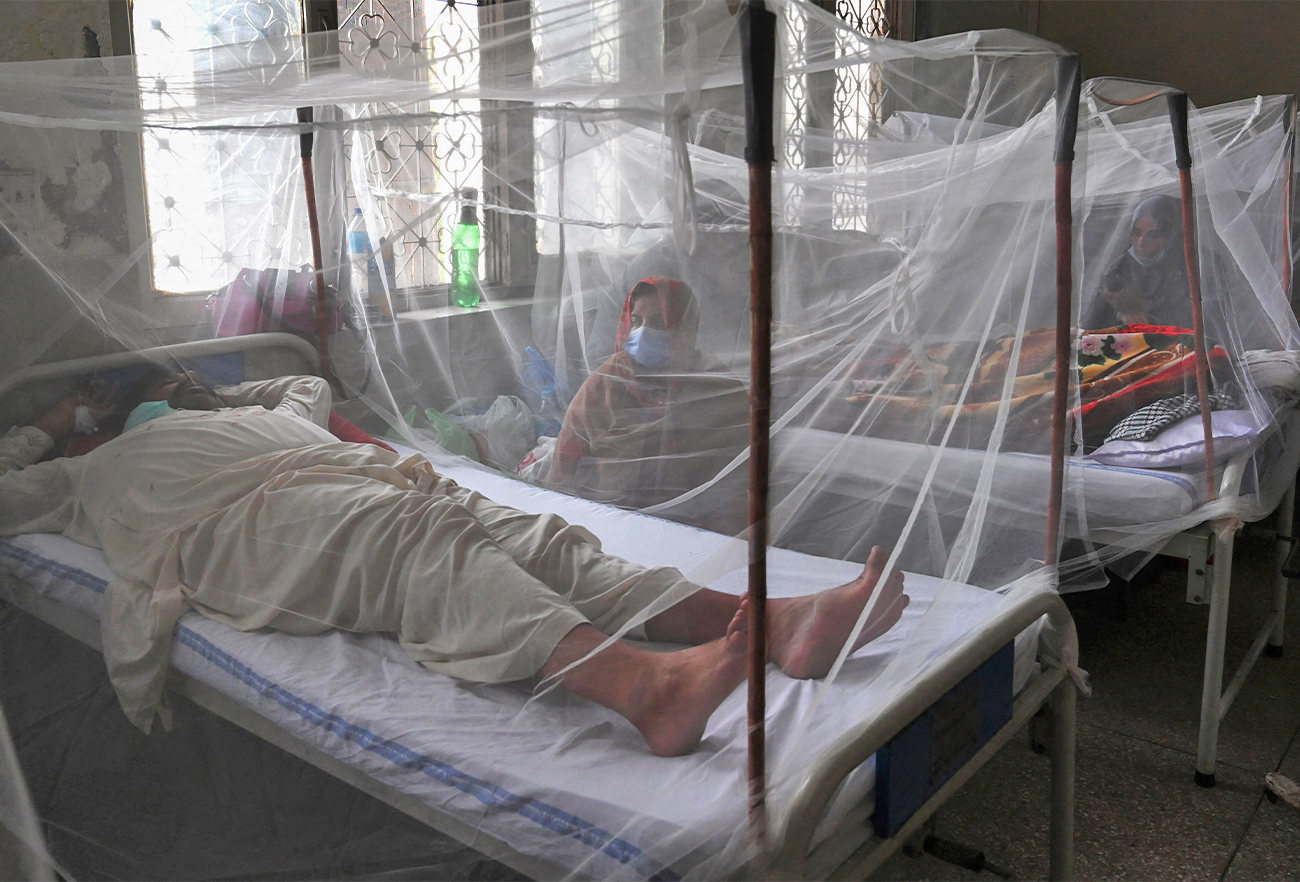ISLAMABAD: At least three more people lost their lives to dengue fever in Lahore, the capital of Pakistan’s most populous Punjab province, in the last 24 hours, Pakistani media reported on Sunday, as the number of confirmed dengue cases surpassed the 10,000 mark.
Dengue is a threat to nearly half of the world’s population. Of the estimated 220 million people infected each year, two million, mostly children in Latin America and Asia, develop its severe form called dengue hemorrhagic fever.
There is no specific treatment for the disease, though its early detection can help in treatment.
“So far, over 25 people in the city have died due to the dengue virus post-monsoon season,” SAMAA news website reported, citing the Punjab health department.
“The total number of cases in the city has surpassed the 10,000 mark, with 452 new cases.”

Relatives sit next patients suffering from dengue fever resting under a mosquito net at a hospital in Lahore, Pakistan, on September 29, 2021. (AP)
At least 1,489 people were in critical condition in the provincial capital. Most of the cases were reported in Defense, Gulberg, Iqbal Town and Samanabad areas of the city.
The Punjab health department has directed officials to speed up the process of waste disposal, urging people to cooperate with the government, according to the report.
The situation in Islamabad and Rawalpindi was no different, with the total number of cases in Islamabad and Rawalpindi reaching 2,600 and 1,100, respectively. Twelve people have died of the dengue virus in Islamabad so far this year.
The Sindh province reported an uptick in cases too, with more than 69 people contracting the fever on Friday. Karachi, the largest megapolis of the country, has been one of the most affected cities in the province, where over 1,500 dengue cases have been reported in October alone.
In Khyber Pakhtunkhwa, four people have died of the dengue fever this year, the report said. The province has recorded a total of 6,291 cases this year.
















